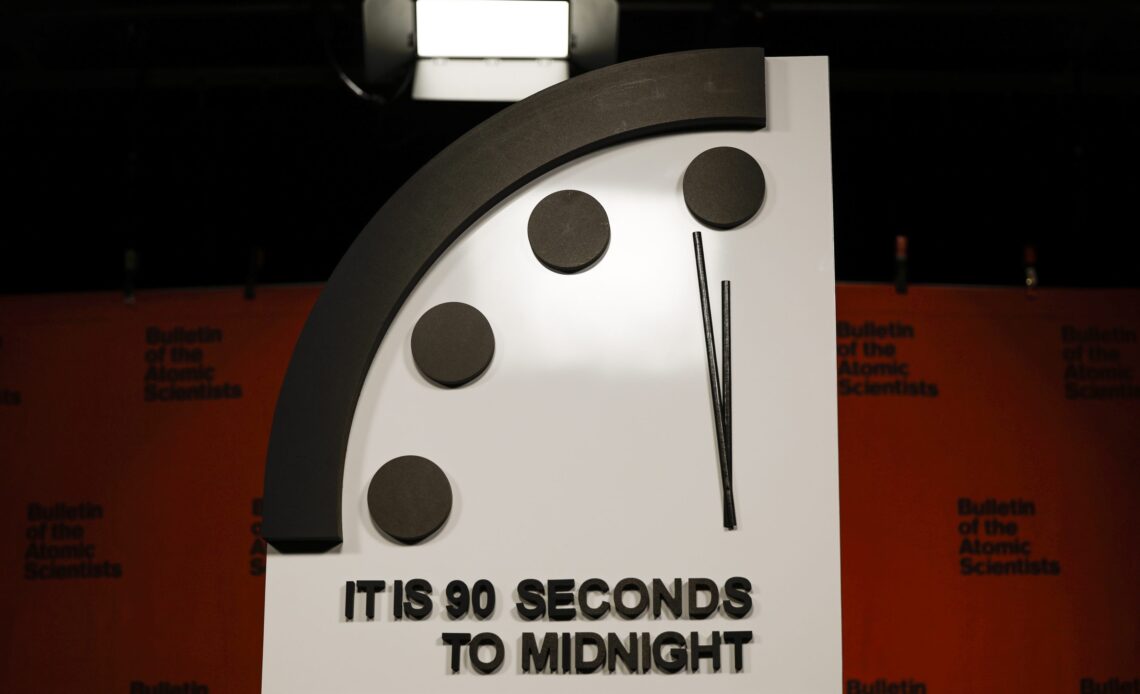[the_ad id="21475"]
[ad_1]
During the COVID lockdowns in 2020, the world felt so dystopian, that the Doomsday Clock was set to 100 seconds to midnight—the closest to a global apocalypse since the metaphoric clock came into existence more than seven decades ago.
The closest, that is, until now.
On Tuesday, the keepers of the Doomsday Clock moved the second hand 10 seconds closer, to just 90 seconds to midnight—marking the most perilous moment the world has faced since 1947, when the Doomsday Clock was invented.
In brief, Armageddon is no longer a remote abstraction.
“Nuclear risks increased significantly last year due largely to Russia’s unprovoked invasion of Ukraine,” said Steve Fetter, professor of public policy at the University of Maryland, announcing the new setting on Tuesday. Russian President Vladimir Putin, he said, “has repeatedly raised the specter of nuclear use.”
Of course, the Doomsday Clock is not a timepiece you can put on your bookshelf, although there is a physical reiteration of it in the University of Chicago Keller Center on New York City’s Upper East Side, indicating year by year how close we are to doom—at least according to the group charged with measuring the global threat level.
What is the Doomsday Clock’s purpose?
The Ukraine War, climate disaster, and the pandemic have all given the Doomsday Clock fresh relevance. But in many ways, it is a Cold War relic.
After the U.S. exploded the nuclear bombs over Nagasaki and Hiroshima in Japan in 1945, effectively ending World War II, Albert Einstein and other physicists at the University of Chicago began sounding the alarm about the bombs’ existential threat to the planet.
They feared that a Cold War arms race between the U.S. and the Soviet Union could result in obliterating entire parts of the world.
“Scientists were saying it was necessary to make judgments about what to do with their inventions,” John A. Simpson, one of the original scientists, said later on.
So, in 1947, an artist drew the first Doomsday Clock for the cover of the University of Chicago’s Bulletin of Atomic Scientists, showing the setting of seven minutes to midnight. The image stuck, and has since served as a yearly snapshot for the state of the world.
Who sets the Doomsday Clock?
While that seven-minutes-to-midnight setting seemed alarming back in the 1940s, that level is the most relaxed the Doomsday Clock has been since 2002. The most peaceful year of all was 1991,…
Click Here to Read the Full Original Article at Fortune | FORTUNE…
[ad_2]
[the_ad id="21476"]
